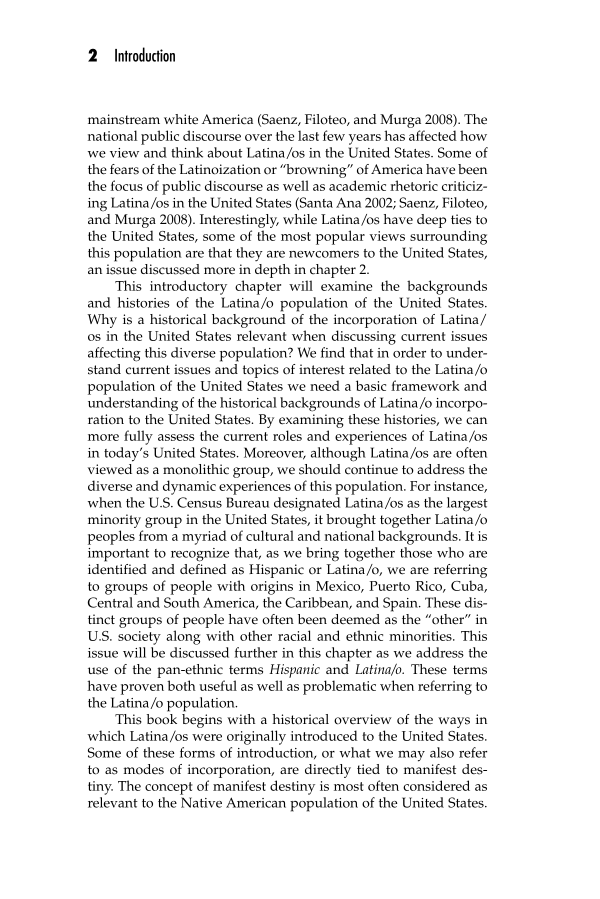2 Introduction mainstream white America (Saenz, Filoteo, and Murga 2008). The national public discourse over the last few years has affected how we view and think about Latina/os in the United States. Some of the fears of the Latinoization or “browning” of America have been the focus of public discourse as well as academic rhetoric criticiz- ing Latina/os in the United States (Santa Ana 2002 Saenz, Filoteo, and Murga 2008). Interestingly, while Latina/os have deep ties to the United States, some of the most popular views surrounding this population are that they are newcomers to the United States, an issue discussed more in depth in chapter 2. This introductory chapter will examine the backgrounds and histories of the Latina/o population of the United States. Why is a historical background of the incorporation of Latina/ os in the United States relevant when discussing current issues affecting this diverse population? We find that in order to under- stand current issues and topics of interest related to the Latina/o population of the United States we need a basic framework and understanding of the historical backgrounds of Latina/o incorpo- ration to the United States. By examining these histories, we can more fully assess the current roles and experiences of Latina/os in today’s United States. Moreover, although Latina/os are often viewed as a monolithic group, we should continue to address the diverse and dynamic experiences of this population. For instance, when the U.S. Census Bureau designated Latina/os as the largest minority group in the United States, it brought together Latina/o peoples from a myriad of cultural and national backgrounds. It is important to recognize that, as we bring together those who are identified and defined as Hispanic or Latina/o, we are referring to groups of people with origins in Mexico, Puerto Rico, Cuba, Central and South America, the Caribbean, and Spain. These dis- tinct groups of people have often been deemed as the “other” in U.S. society along with other racial and ethnic minorities. This issue will be discussed further in this chapter as we address the use of the pan-ethnic terms Hispanic and Latina/o. These terms have proven both useful as well as problematic when referring to the Latina/o population. This book begins with a historical overview of the ways in which Latina/os were originally introduced to the United States. Some of these forms of introduction, or what we may also refer to as modes of incorporation, are directly tied to manifest des- tiny. The concept of manifest destiny is most often considered as relevant to the Native American population of the United States.
Document Details My Account Print multiple pages
Print
You have printed 0 times in the last 24 hours.
Your print count will reset on at .
You may print 0 more time(s) before then.
You may print a maximum of 0 pages at a time.














































































































































































































































































































